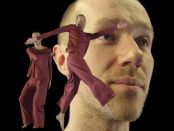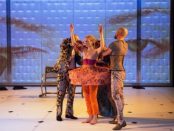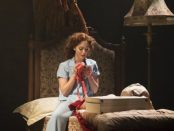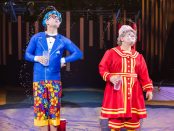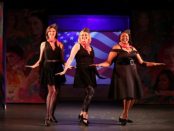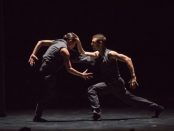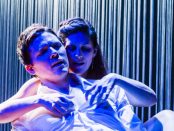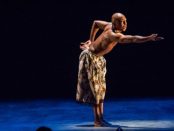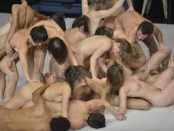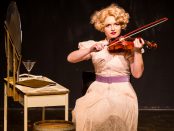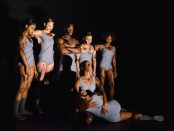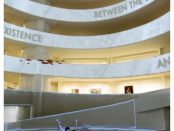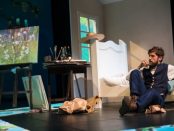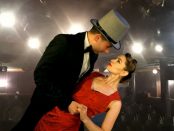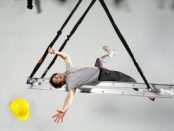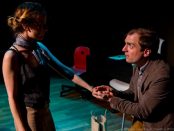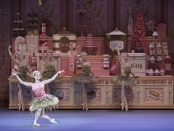Mimi Garrard and Friends
In “Lines,” the videos were straightforward representations of Mr. Selden, clad in a loose-fitting red outfit, pausing his image in dramatic moments while in the second work, “Untranslatable,” directed by Ms. Garrard and choreographed by her and the very solid dancer, Ms. Hopkins-Greene (formerly of the Alvin Ailey troupe), the visual elements—produced by Ms. Garrard—were far more abstract, chaining together tiny images of the dancer in fantastical patterns like giant letters, globes, maps, etc., as the dancer, clad in a chic two-piece purple outfit designed by Mindy Nelson bounded about. Snatches of poetry by Walt Whitman were cut and shifted about to provide an aural accompaniment to the steps which were vigorous with lots of quick direction changes. Images of Ms. Hopkins-Greene floated about the screen making it seem as if she were dancing with clones, all equally talented. [more]

